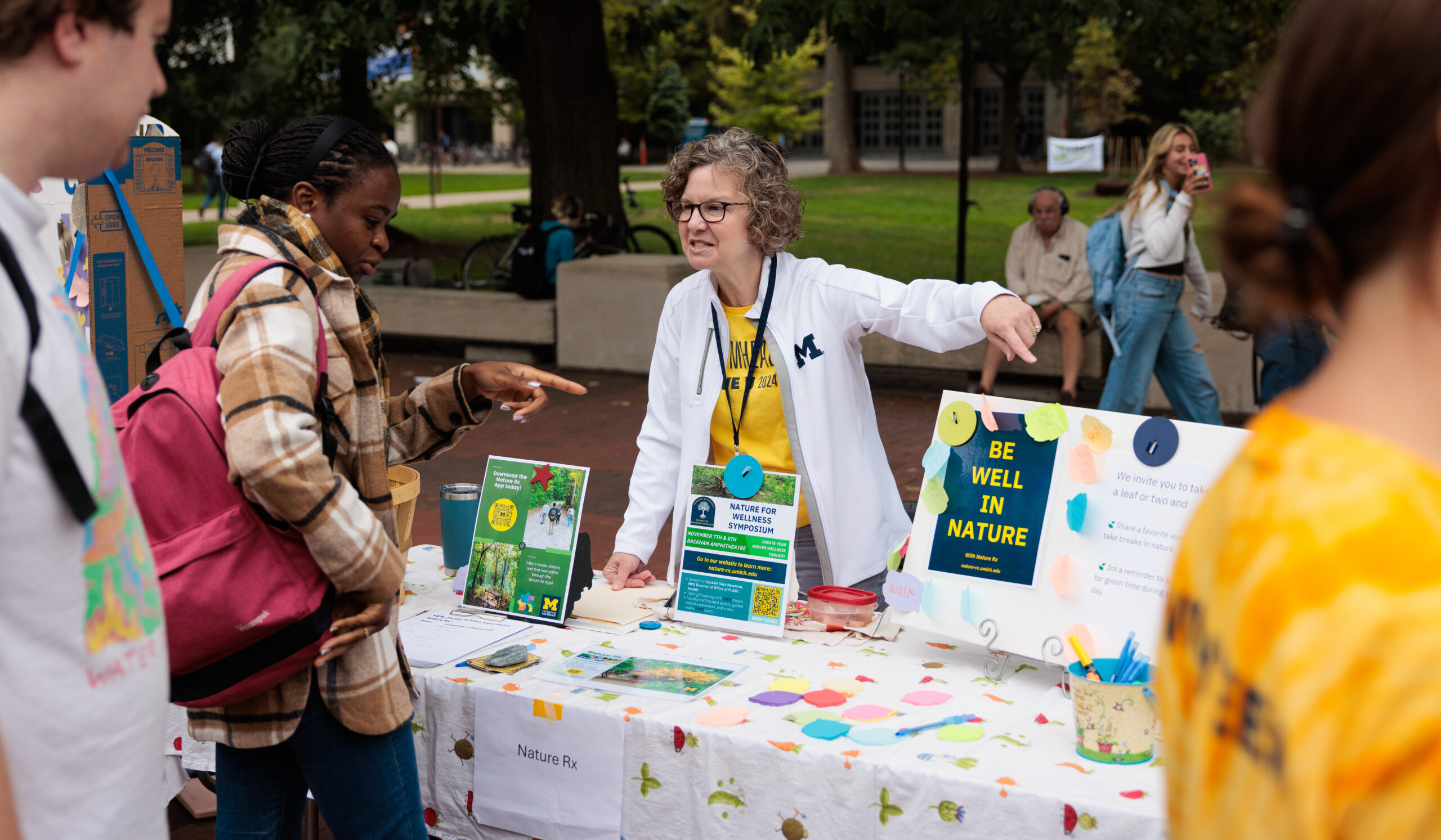The Bard is Back
•
For two years, Puck has been waiting in the wings during a pandemic- induced intermission. But the capricious fairy and his mischievous friends have returned to the forests and fields of Nichols Arboretum as U-M’s Shakespeare in the Arb (SITA) belatedly celebrates its 20th anniversary with a production of William Shakespeare’s “A Midsummer Night’s Dream.”
“We’re all very excited to resume live performances of Shakespearean plays in the Arb,” says Kate Mendeloff, founding artistic director of Shakespeare in the Arb and lecturer in the Residential College. “It was tough to give up our 2020 season due to the pandemic because that was our 20th anniversary year. We had planned a big reunion for everyone who had been involved with SITA over the past two decades.”
As the pandemic dragged on through 2021, Matthaei Botanical Gardens and Nichols Arboretum—collaborators with the RC on SITA productions—hosted an exhibit of costumes and photos from past renditions of “A Midsummer Night’s Dream” in lieu of an actual performance. Some RC alums also posted videos of informal readings of their favorite Shakespearean scenes on social media.
Now the show is back, with a performance every Thursday through Sunday in June.

Cam Robinson, a fourth-year LSA student, is looking forward to playing Puck in his debut SITA role.
His interest in Shakespeare was piqued when he saw SITA’s performance of “Twelfth Night” during his first year at U-M.
“The way the actors used the Arb’s natural landscape was seamless,” Robinson says. “It felt like this was how the play was meant to be performed.”
Brittany Batell, ’12, MPH’16, MSW’16, is re-turning for her 11th SITA season to play Oberon, king of the fairies. In previous productions of “A Midsummer Night’s Dream,” she was cast as Puck and Hermia.
Batell says she gained a lifelong community of friends through SITA, which she attributes to the bonding experience forged through the troupe’s unique theater process.
“You only have four weeks to throw together a show outdoors with bugs, heat, rain, mud, pollen and poison ivy, and entrances and exits that are a quarter-mile away at the top of the hill,” she says. “It is physically and creatively challenging, and you have to develop a connectedness with your fellow actors and production team to pull it off.
“We laugh, cry and sweat together,” Batell continues. “Then we get to add in the electricity of huge audiences who go on that adventure with us. They become part of the collaboration and the magic of the space.”
Looking back, Mendeloff remembers the inaugural production of “A Midsummer Night’s Dream” in 2001 as a near disaster.
“It was a one-off production with two weekends of free performances, funded by a Ford Motor Company grant,” she says. “The weather was terrible—cold and wet—and very few people came on the first two nights. But Sunday was beautiful, and more than 300 people showed up. So we decided to do it again.”
The idea to produce Shakespearean plays annually in the 123-acre Arb solidified the following year, and in 2002 Shakespeare in the Arb was officially launched.
Throughout the years, Mendeloff has stayed on as artistic director. Now, two of her former drama students, Carol Gray, ’04, MPH’19, and Graham Atkin, ’02, MS ’12, PhD’14, serve as co-directors who ensure SITA will continue to thrive in coming years.
“WE LAUGH, CRY AND SWEAT TOGETHER. THEN WE GET TO ADD IN THE ELECTRICITY OF HUGE AUDIENCES WHO GO ON THAT ADVENTURE WITH US. THEY BECOME PART OF THE COLLABORATION AND THE MAGIC OF THE SPACE.”
By taking an inclusive approach to auditions and casting and using a collaborative method of production, Mendeloff and the SITA troupe have built a strong family-like theater community.
“The ensemble experience is vital,” she says. “As directors, we develop a production with our cast. This is very different from the hierarchical, top-down process where the director is in charge and the actors work to fulfill the director’s template.”
The dynamic setting of the Arb helps bring this collaborative energy front and center. The environmental staging creates a magical world filled with creatures, music and movement, engaging the audience as it follows the cast to different corners of the Arb throughout the course of the play. The unexpected whup-whup of a helicopter or a horn blast from a train only adds to the excitement.
“People have told me they didn’t like Shakespeare because it was boring and hard to understand,” Mendeloff says. “But after seeing a SITA performance, they became much more engaged. For young people, in particular, these productions have been a really positive experience.” For Batell, “A Midsummer Night’s Dream” captures the spirit of loss and reconnection, which she says may be the perfect theatrical antidote for a COVID-weary world.
“The pandemic has been scary and traumatic,” she says, “but we’ve also gained perspective on what’s truly important and how we personally need to transform.”
CLAUDIA CAPOS, ’73, is an award-winning journalist, writer, and editor. Her feature articles on research, business, celebrities, and travel have appeared in national and international publications.



